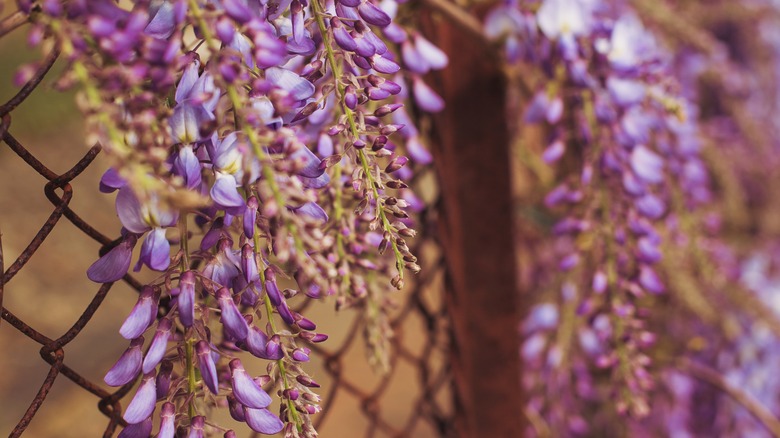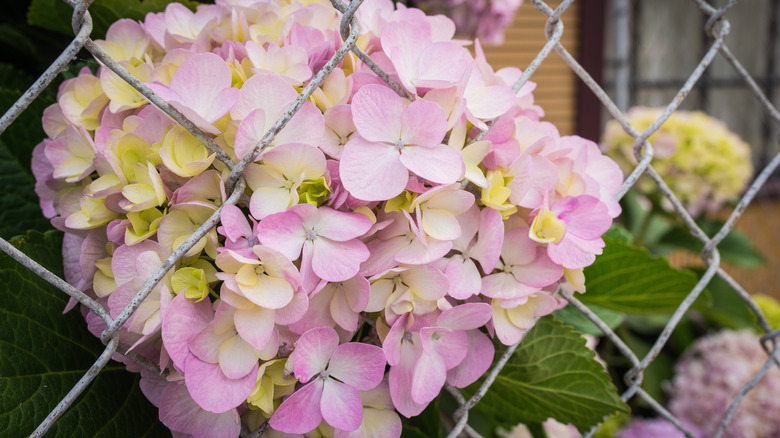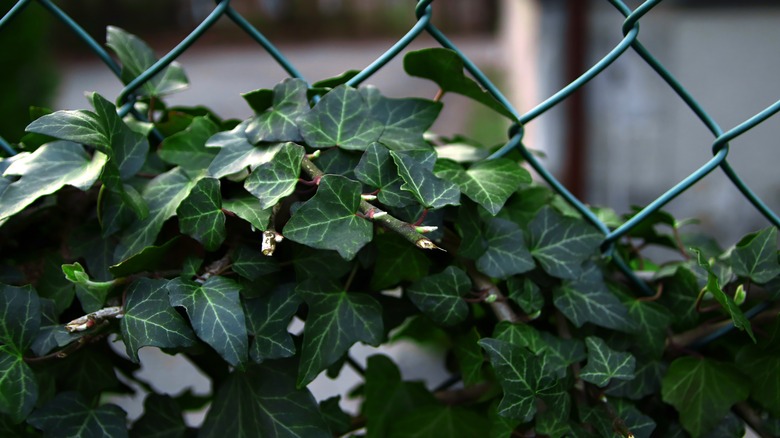How To Grow Climbing Plants On A Chain Link Fence (& The Best Varieties To Use)
Got an unsightly chain-link fence that you'd rather not feature as the backdrop of your yard? While chain-link fences have been a staple since the 1940s, they excel more in functionality than in beauty. Luckily there is a green solution to covering up your chain-link fence that's both eco-friendly and pretty — naturalizing your fence with climbing plants. This process involves training plants to weave their way up and through the fence, turning the plain metal look into something way prettier, but — why else would you do this?
First, let's talk about privacy. A bare chain-link fence offers little in terms of seclusion. When you add climbing plants, you obscure the fence and create a barrier from prying eyes. Next on the list is curb appeal. With climbing plants, you can transform something admittedly on the drab side into something vibrant and gorgeous. Lastly, let's not forget about the environment. Climbing plants contribute to air purification and offer habitats for small critters like birds and beneficial insects. It's your way of turning something utilitarian into a miniature ecosystem. With that in mind, let's move on to the how-to!
What plants should you choose for your chain-link fence?
First things first, when you are picking out your plants, it is usually smart to go with non-invasive species for your chain-link fence project. Why? Because they're easier to manage and won't cause you any headaches down the line. Remember, you want to balance practicality with prettiness, and that means not choosing plants that may creep and overtake you or your neighbor's yard.
Now, which climbing plants should you grow on your fence? For a stunning backdrop, consider foliage vines like climbing hydrangeas and climbing roses, like cherry frost. These vines often have variegated leaves or breathtaking fall colors that can transform your fence into a living work of art. Evergreen options such as climbing wisteria, Carolina jessamine, and American bittersweet ensure your fence looks lovely throughout the year. These plants bring winter interest and create a lush background for other garden features. Looking for some privacy fence ideas? Virginia creepers (though this can be a nuisance in certain areas, so be careful to not allow it to become too aggressive), trumpet honeysuckle, and crossvine are excellent choices. These vigorous growers quickly cloak your fence, providing a natural barrier between you and the outside world. However, avoid planting large trees near your fence as their roots could interfere with the structure, potentially leading to damage.
How to grow plants on your fence
After selecting your plants, it's time to get them into the ground. Start by planting them at the base of the fence, ideally spaced a few inches or feet apart to give them room to grow. This will totally depend on what you are growing, so make sure that you check the seed packets or growing instructions before getting started. Once your plants are growing and have started to get established, you will begin the process of training, which essentially means getting the plants to grow on and through the fence. Gently guide the plants through the links as they grow, securing them with garden twine or ties if they seem like they might grow outwards. Regular pruning will help maintain shape and encourage bushier growth.
Finally, pay attention to the growing instructions when it comes to fertilizing, and watch out for pests like aphids or snails, which could chomp on and mess with your plants. Keep in mind that some climbers may die back in the winter but, come spring, they'll burst back to life, continuing their mission of making your fence a little more appealing. Keep in mind, too, that some climbing plants prefer shade and will grow faster without full sunlight. And, overall, remember, patience is key. It might take a season or two for your fence to reach its full potential, but with each passing month, you'll see more and more progress.


